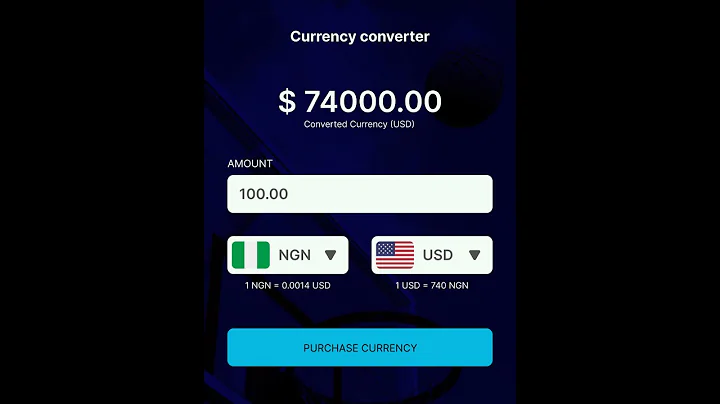Boost Your Shopify Website Speed with Easy Image Optimization
Table of Contents
- Introduction
- Importance of Website Speed
- Reasons for Slow Loading Websites
- Studies on User Bounce Rate and Revenue Loss
- Google's Perspective on Website Speed
- The Role of Image Optimization
- Identifying Images for Optimization
- Resizing Images for Desktop and Mobile
- Choosing the Right Image Format
- Exporting and Compressing Images
- Using Image Optimizer App in Shopify
- Final Thoughts
Increase Your Shopify Website Speed with Image Optimization
In today's fast-paced digital world, having a fast-loading website is crucial for the success of your Shopify store. Slow website speed not only provides a poor user experience but also negatively impacts your site's search engine rankings and revenue potential. In this article, we will explore the number one way to increase your website speed: image optimization. We will discuss the importance of website speed, the reasons behind slow loading websites, the impact of website speed on user bounce rates and revenue, Google's perspective on website speed, and a step-by-step guide on how to optimize your images for better website performance.
Introduction
In the competitive online market, every second count when it comes to website loading speed. A slow-loading website not only frustrates users but also hampers your chances of attracting and retaining customers. According to studies conducted by Google and other industry leaders, even a slight delay in website load time can significantly increase user bounce rates and result in substantial revenue loss. In order to stay ahead of the competition and provide a seamless user experience, it is crucial to optimize your website's performance. One of the most effective ways to achieve this is through image optimization.
Importance of Website Speed
Website speed is a critical factor in providing an exceptional user experience. Slow-loading websites not only test users' patience but also reflect poorly on your brand and credibility. In today's fast-paced digital world, users expect instant access to information and products. If your website fails to meet these expectations, users are likely to abandon your site and turn to your competitors instead. This can have a detrimental impact on your website's bounce rate, conversion rate, and ultimately, your revenue.
Reasons for Slow Loading Websites
There are several reasons why websites may suffer from slow load times. Some common factors include large file sizes, unoptimized code, excessive server requests, and slow hosting providers. However, one of the most significant contributors to website speed issues is the improper handling of images. Images tend to be the largest files on a website and can significantly impact load times if not optimized correctly.
Studies on User Bounce Rate and Revenue Loss
Several studies have been conducted to understand the relationship between website speed and user behavior. Google's 2017 study found that when a website's page load time increased from one second to three seconds, the probability of user bounce or exit increased by 32%. This demonstrates the undeniable link between website speed and user engagement. In another notable study, Amazon discovered that a one-second delay in website load time could cost them a staggering $1.6 billion in lost revenue per year. These studies highlight the importance of website speed and its impact on user behavior and revenue potential.
Google's Perspective on Website Speed
Speed and performance have always been a priority for Google. As the leading search engine, Google aims to provide users with the best possible search experience. Therefore, they take website speed into consideration when ranking websites in search results. Slow-loading websites are more likely to rank lower than faster, more optimized websites. This is because Google prioritizes websites that offer a seamless user experience. By focusing on website speed, you can improve your website's search engine optimization (SEO) rankings and drive more organic traffic to your Shopify store.
The Role of Image Optimization
Image optimization plays a crucial role in improving your website's overall performance and speed. As images are often the heaviest component of a website, optimizing them can significantly reduce load times and ultimately enhance the user experience. By properly optimizing your images, you can strike a balance between delivering high-quality visuals and maintaining fast loading speeds. The following steps will guide you through the process of image optimization for your Shopify website.
Identifying Images for Optimization
Not all images on your website have the same impact on load times. It's essential to identify which images are the most crucial and require optimization. Typically, your banner images and product images are the main focus. By targeting these images, you can make the most significant impact on your website's performance.
Resizing Images for Desktop and Mobile
To optimize your images effectively, you need to resize them based on their intended usage. Different devices and screen sizes require different image dimensions. By adjusting the size or dimensions of each image accordingly, you can ensure that they load efficiently on various devices without sacrificing quality.
Choosing the Right Image Format
When it comes to choosing the right image format, JPEG is usually the best option for online web stores. JPEG images offer a good balance between image quality and file size. However, if your images have a transparent background, you should opt for PNG format instead. Shopify's 2.0 themes automatically convert uploaded JPEG images to the newer webP format, further optimizing image delivery.
Exporting and Compressing Images
After resizing and selecting the appropriate image format, it's crucial to export and compress your images. This process involves removing unnecessary data or metadata from the images and optimizing their layout and format. Several apps, such as the Image Optimizer app for Shopify, can help streamline this process and ensure that your images are compressed to the optimal size.
Using Image Optimizer App in Shopify
The Image Optimizer app is a valuable tool for optimizing images on your Shopify website. This app automatically optimizes images, reducing their file size without compromising quality. By installing and using this app, you can significantly improve your website speed, user experience, and search engine rankings. The Image Optimizer app offers a range of features and settings that allow you to fine-tune your image optimization process and ensure optimal results.
Final Thoughts
In today's digital landscape, website speed plays a crucial role in user satisfaction, search engine rankings, and revenue generation. By prioritizing image optimization, you can significantly improve your Shopify website's speed, user experience, and overall performance. Remember to identify and optimize the most important images, resize them for different devices, choose the appropriate image format, and compress them using tools like the Image Optimizer app. By taking these steps, you can ensure that your Shopify store provides a fast and seamless experience for your customers, leading to increased engagement and conversions.
Pros:
- Improved user experience
- Higher search engine rankings
- Increased organic traffic
- Reduced bounce rates
- Enhanced brand credibility
Cons:
- Image optimization process can be time-consuming
- Balancing image quality and file size may require trial and error
- Additional app installation may be required for comprehensive image optimization
Highlights
- Website speed is crucial for user satisfaction and revenue generation.
- Slow-loading websites result in increased bounce rates and revenue loss.
- Google prioritizes fast-loading websites in its search rankings.
- Image optimization is the most effective way to improve website speed.
- Resizing, choosing the right format, and compressing images are essential steps in image optimization.
- The Image Optimizer app for Shopify helps automate and streamline the image optimization process.
FAQ
Q: Can image optimization alone significantly improve website speed?
A: Image optimization is a crucial component of website speed optimization. While it can make a significant impact, it is also important to address other factors like server response time, code optimization, and hosting provider performance.
Q: How much time does it take to optimize images for a Shopify website?
A: The time required for image optimization depends on the number of images and their complexity. It is recommended to allocate sufficient time and plan accordingly to ensure thorough image optimization.
Q: Will image optimization reduce the quality of my images?
A: Proper image optimization aims to strike a balance between reducing file size and maintaining image quality. With careful resizing, choosing the right format, and compressing images, you can optimize them without significant loss in quality.
Q: Is the Image Optimizer app the only option for image optimization in Shopify?
A: No, there are several apps available for image optimization in Shopify. The Image Optimizer app mentioned in this article is a popular and user-friendly option, but you can explore other apps that suit your specific needs and preferences.
Q: Can image optimization benefit SEO efforts beyond website speed improvements?
A: Yes, image optimization can indirectly benefit your SEO efforts. Fast-loading websites tend to have higher search engine rankings and improved user engagement, leading to increased organic traffic and better search visibility.













